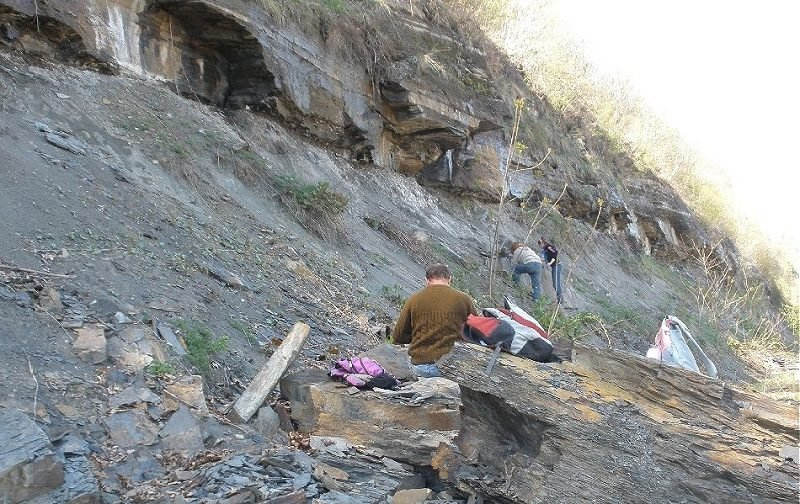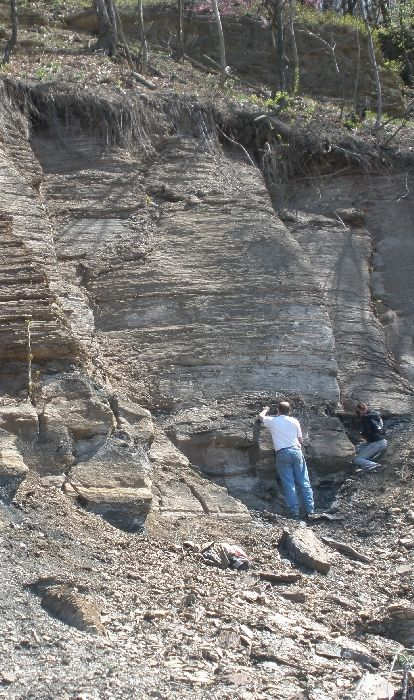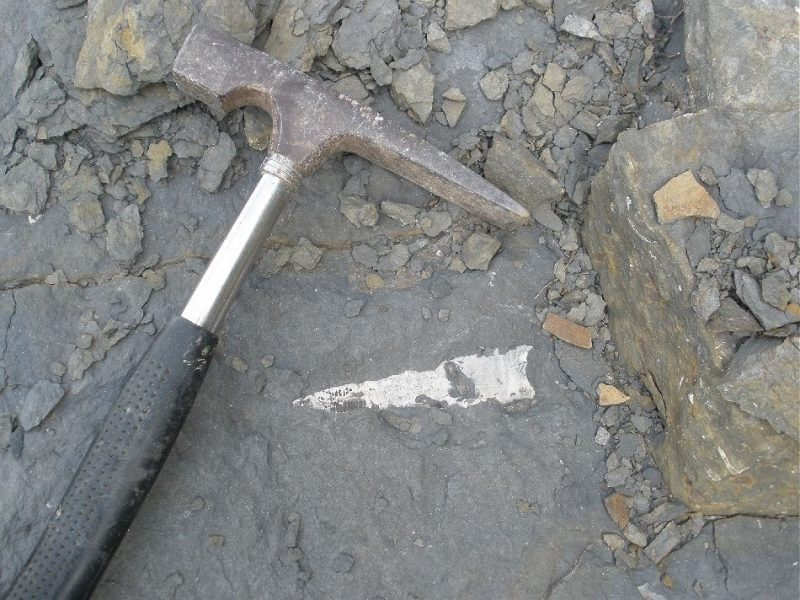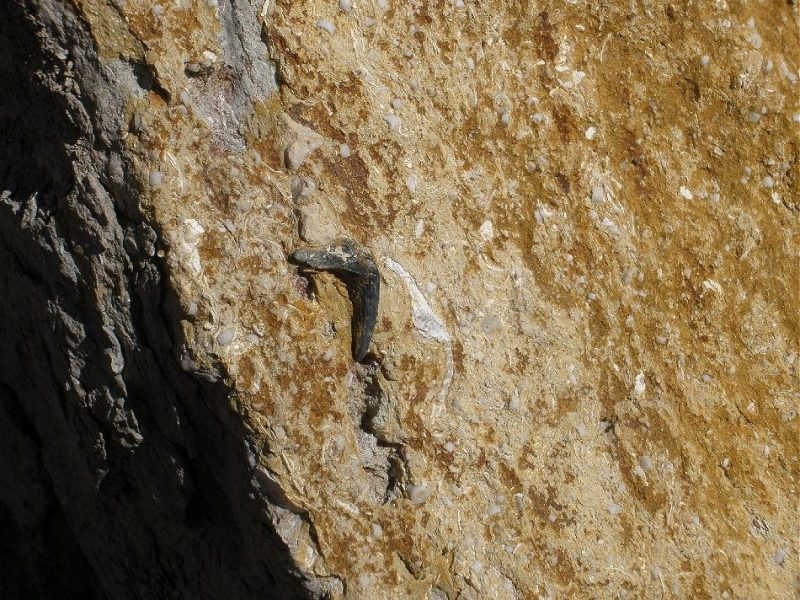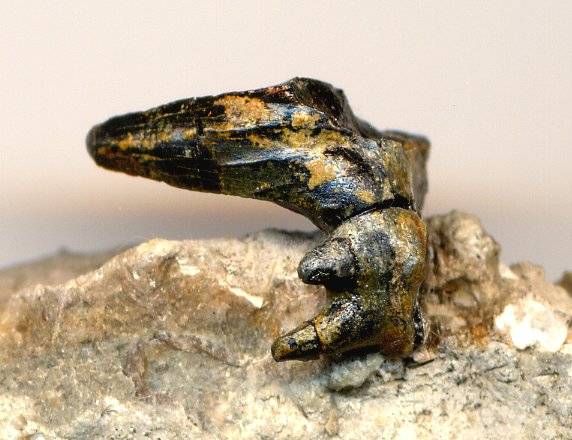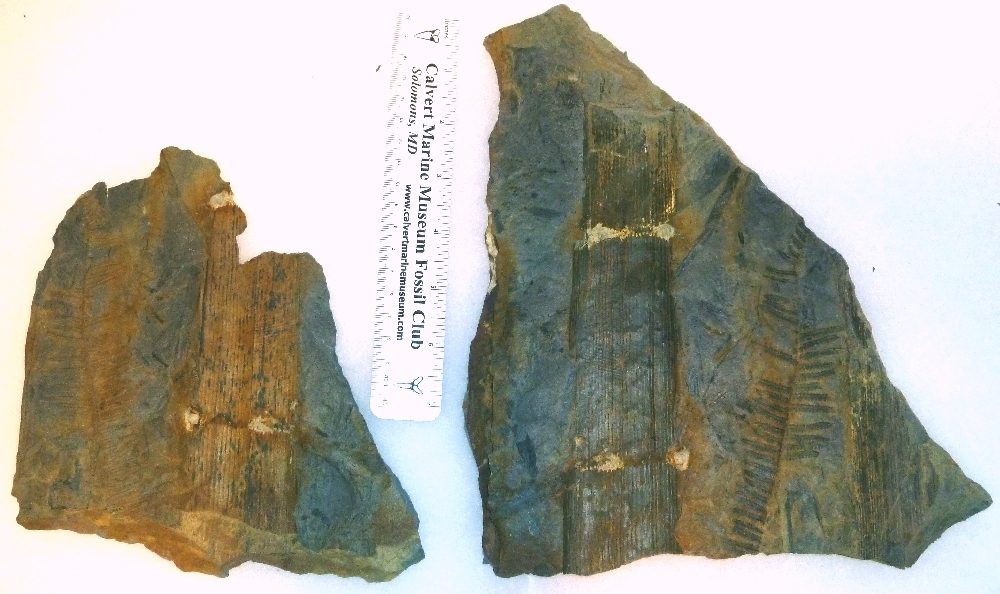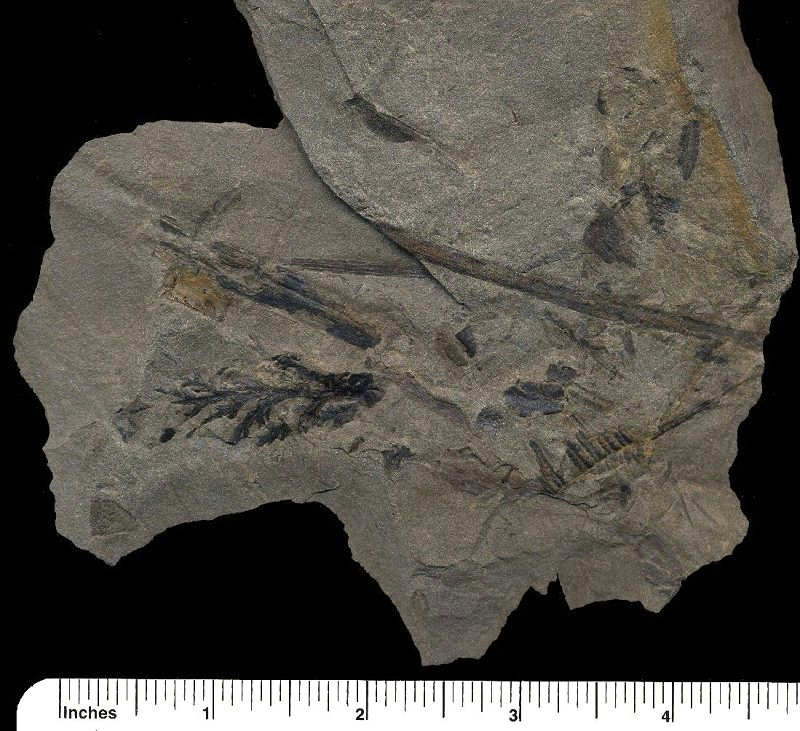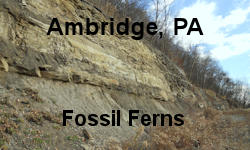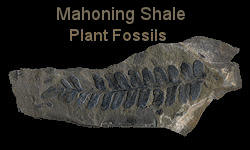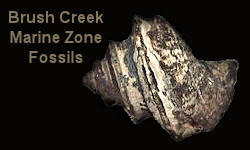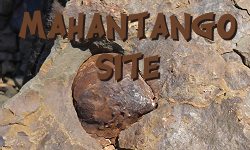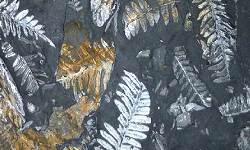Ambridge Fossil Trip
Fossil Shark and Fern Trip - Ambridge, PA
Carboniferous - Pennsylvanian (~300 m.y.o.)
Fossil Carboniferous Plant and Shark Tooth Hunt
It's been years since the roadwork finished on Rt. 65 across from the Ambridge Woodlawn Bridge. One of the goals of this roadwork was to make the large road cut across
from the bridge safer so that debris would not fall. They scraped the massive road cut clean, so that not even a grain of sand would fall from it. Then they put
up fencing material all over the cut to keep boulders at bay. The project was a success... However, by doing this, they temporarily ended a nice fossil
collecting site. Fortunately for the avid fossil hunter, erosion always wins, and today, large chunks of fossil bearing rock are falling from the road cut
(luckily quite a safe distance from the road). It's time to fossil hunt!
In June of 2010, Beblebrox, an acquaintance from the website, invited me to Ambridge for a fossil hunt. He also knew of a road cut with some Ames Limestone exposed
(For me, this means Pennsylvanian shark teeth). Our hunt was a nice one. He took me to the Ambridge road cut, for which I haven't been to in years, and a few
other road cuts in the area, including the one with the Ames Limestone exposed.
The hunt was nice! It was good to collect somewhat close to home and also to collect with other fossil hunters. We all found plants from the Mahoning formation,
invertebrates from the Brush Creek formation, and I even ended up with one gnarled shark tooth from the Ames limestone... my first ever!
After that nice hunt, months went by, the summer came and went, and winter approached (oh, and no website updates occurred). Before the winter snows set in, I
wanted to scout out more areas for the Ames limestone. So, I invited a friend who seemed interested in fossils on a scouting trip with me. We drove to various
road cuts looking for the Ames limestone. After not finding any promising areas, I decided to end the trip by taking him to the Ambridge road cuts to collect
some plant fossils. He enjoyed splitting the shale and finding the fossil plants, and is now eager to go on another hunting trip!
Pictures from the Trip:

Chunks from the road cut fall and crash into pieces, often exposing the fossil plants inside. These fragile fossils quickly erode away. However, new boulders are always falling.
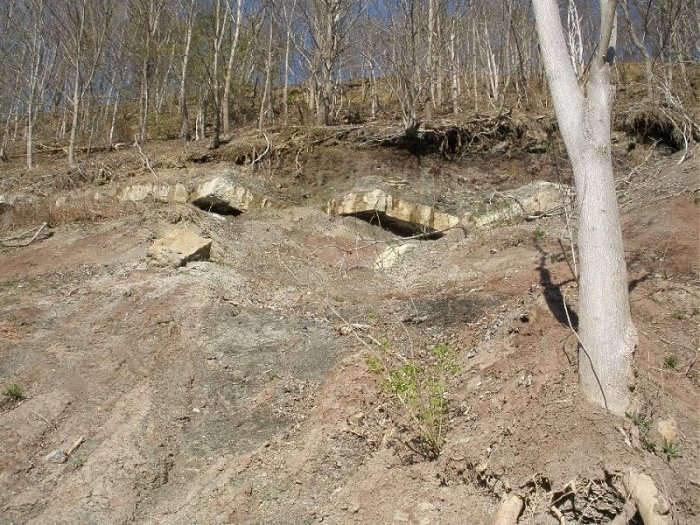
This picture shows an outcropping of Ames limestone. It's the large blocks sticking out toward the top of the hill. Notice the pitttsburgh "Red bed" directly under the limestone.
Fossils From the Trip:
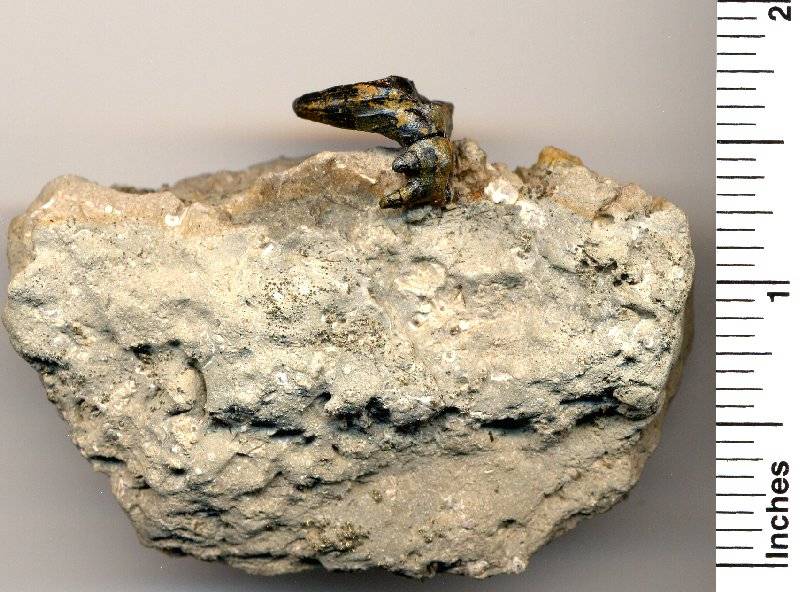
Here is the shark tooth found. It's Glikmanius occidentalis. It use to be called Cladodus occidentalis. The right side cusps are broken off.
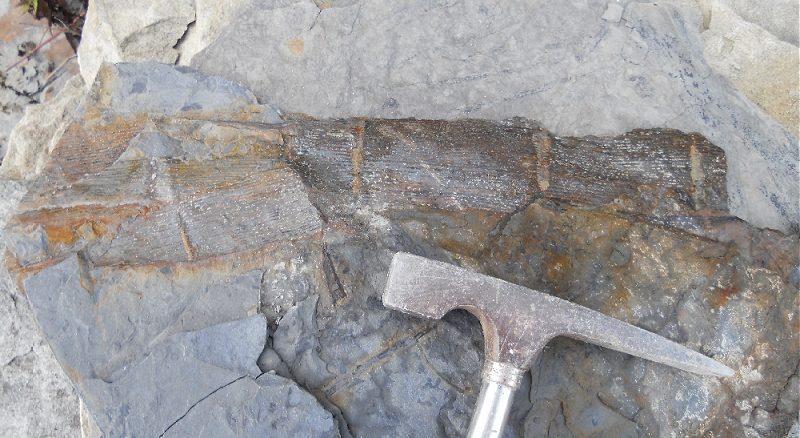
This is another Calimites stem fragment. It was left as found... To lay and erode away with the rest of the fossils.
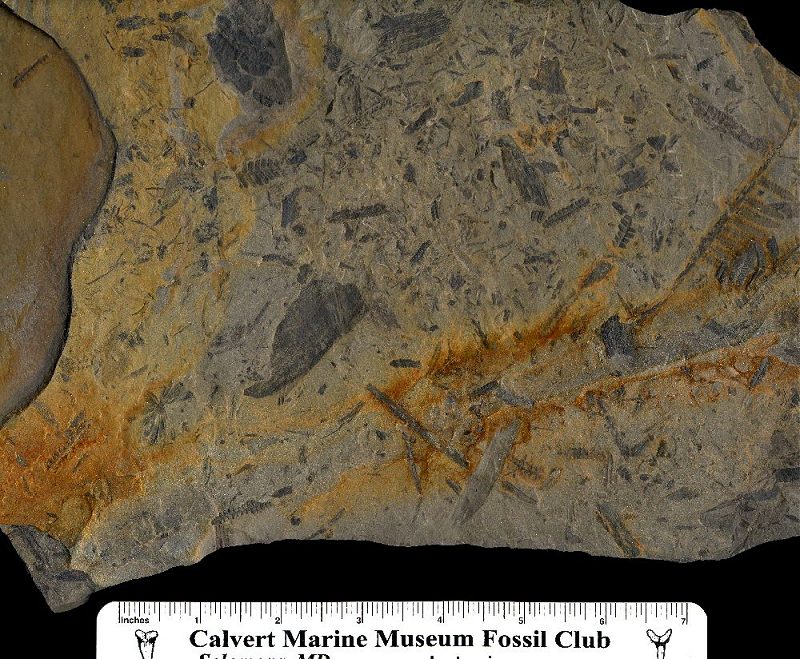
This is a leaflet from a Calimites tree, it's called annularia (it's to the lower left on the plate).
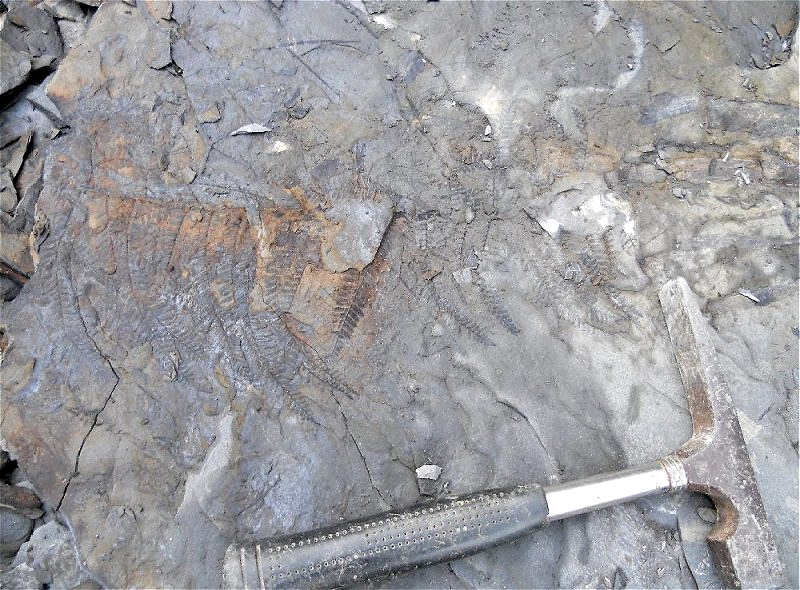
Here is a whole frond of a Pecopteris fern. Unfortunately, it was a bit mangled, and the rock was cracked up, so we left it there
Recommended Books for the Pittsburgh Roadcuts:
A Guide to Pennsylvanian (Carboniferous) Age Plant Fossils of Southwest Virginia
by Thomas F. McLoughlin, 2013
Yes, I know it says Western Virginia, but the Coal forests in Western Virginia was the same forest in Western Pennsylvania.
It was one giant forest that ran down the ancient delta.
This book is chulk full of illustrations, 280 to be exact, many of which are in color. These illustrations makes identifying almost any carboniferous plant fossil a simple task. If you collect fossil ferns from the Carboniferous, this well organized book will serve as your identification guide.
Fossil Collecting in the Mid-Atlantic States: With Localities, Collecting Tips, and Illustrations of More than 450 Fossil Specimens
by Jasper Burns, 1991
This book is a classic! Although some of the fossil hunting site listed in this book no longer exist, it shows what fossils can be found in the same area. What makes this book a classic is Jasper Burns incredible sketches of the locations and the fossils found at each location. It is a very descriptive and useful guide book. Even after all these years, I still find myself referencing it!
Included are numerous Carboniferous plant sites in Virginia, West Virginia, Pennsylvania, and Maryland.
References / Works Cited
Gastaldo, Robert A.; Stevanovic-Walls, Ivana M.; Ware, William N.; and Greb, Stephen F. (2004) Community heterogeneity of Early Pennsylvanian peat mires. Geology 32, 693-696. (doi:10.1130/G20515.1)

